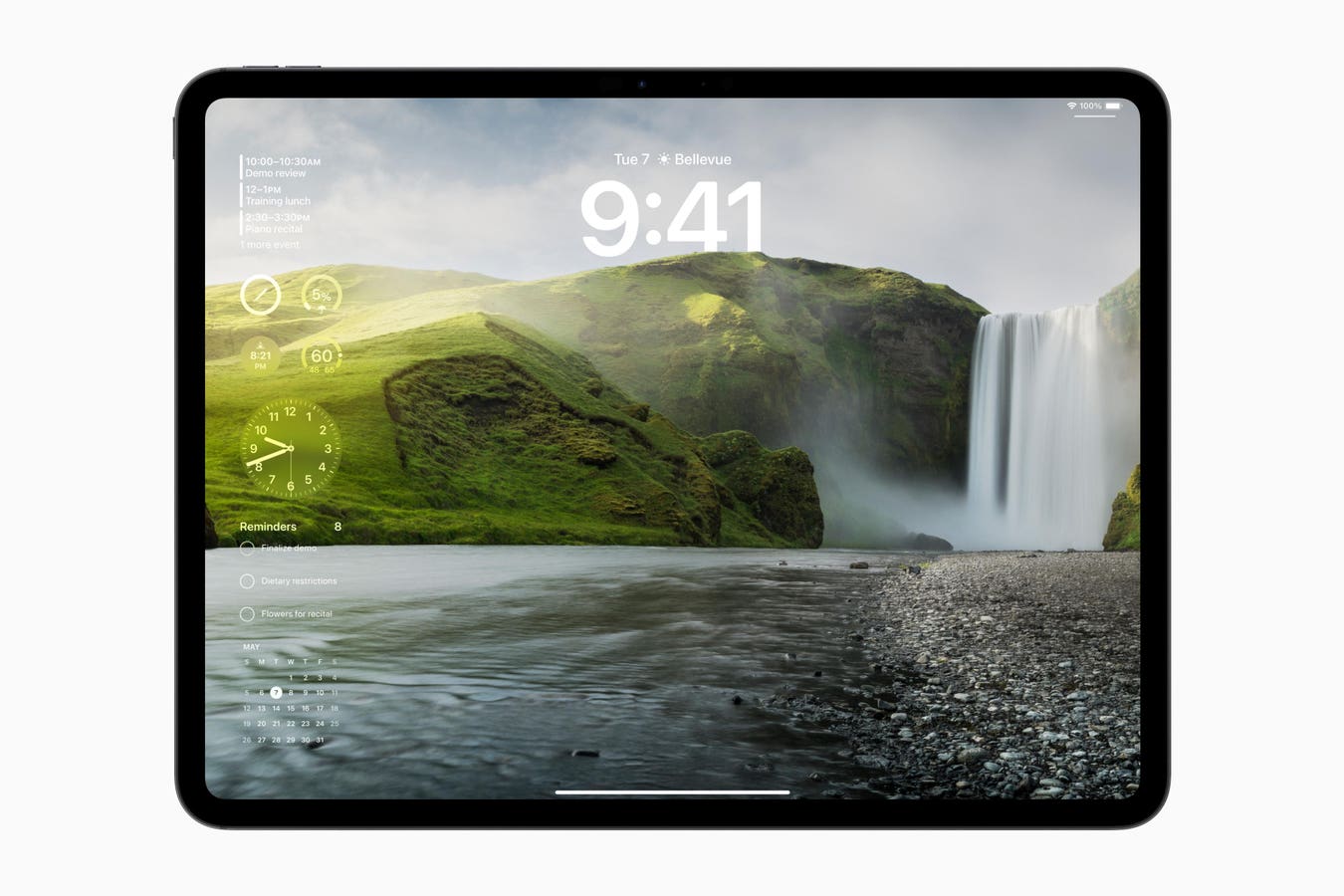MOUNTAIN VIEW, CALIFORNIA – AUGUST 13: An attendee holds the new Google Pixel 9 phones during the Made By Google event at Google headquarters on August 13, 2024 in Mountain View, California. Google announced new Pixel phones, watches and AI features during the Made By Google event. (Photo by Justin Sullivan/Getty Images)
Getty Images
The recent launch of Google’s Pixel 10 series signals a new frontier in AI development and competition, moving from large language models to AI embedded devices. This transition, enabled by the Tensor G5 chip and Gemini Nano model, reflects a broader industry trend where AI is becoming an integral, invisible layer within personal devices rather than a standalone service. The implications extend beyond smartphones to earbuds, watches, glasses, and other wearables, indicating a future where AI operates contextually and continuously within physical and personal items. This shift is part of the development toward “ambient intelligence”, where intelligence surrounds users and understand user needs without demanding active engagement.
The Trend Toward Device-Based AI
The Pixel 10’s features demonstrate the practical advantages of on-device AI processing. Magic Cue provides contextual suggestions by analyzing activity across applications without cloud dependency, making connections between info from emails, screenshots and notes. Camera Coach offers real-time photographic guidance through Gemini-powered scene analysis. Voice Translate maintains natural vocal characteristics during real-time call translation, all processed locally on the device. These capabilities extend throughout Google’s product ecosystem, including the Pixel Watch 4’s personal AI health coach and Pixel Buds Pro 2’s adaptive sound control, all powered by on-device AI processing.
Smartphones across companies and countries are racing to build on-device AI. Apple’s iOS 26 update will incorporate similar live translation for calls and messages and visual intelligence features. Huawei and Xiaomi are integrating real-time AI translation, AI videos, AI recorder and AI-powered gesture recognition for photo transferring into their flagship devices, supported by substantial investments in semiconductor development. Similarly, Samsung is collaborating with chip manufacturers to optimize on-device AI for transcribing and summarizing audios as well as video and image editing, reflecting a global industry shift toward localized AI processing.
Economic and Industrial Implications
The combination of AI-enhanced phones, glasses, watches, and other devices points toward a future where intelligence becomes integrated into our environment. This model emphasizes proactive, context-aware assistance that minimizes required user interaction. AI glasses can overlay real-time translations or navigation cues onto the physical environment, while smartwatches with on-device AI can monitor health metrics and provide personalized recommendations. This transition requires specialized hardware architectures, including Neural Processing Units (NPUs) and tensor-optimized chips like Google’s Tensor G5 and Qualcomm’s Snapdragon platforms, all designed to enable efficient local AI processing.
Ray-Ban Meta Smart Glasses utilize multi-modal AI to process visual and auditory information, enabling contextual queries and hands-free content creation. With sales exceeding 2 million units and production targets of 10 million annually by 2026, these devices demonstrate growing market acceptance. The Oakley Meta HSTN variant targets athletic users with features like real-time environmental analysis, while start-ups like XReal and Viture are focusing on high-fidelity augmented reality displays for productivity and entertainment applications, creating increasingly sophisticated alternatives to traditional screen-based interfaces.
The development of AI hardware involves specialized materials, supply chains, and manufacturing processes, creating opportunities for established companies and specialized manufacturers. The application of robotics, another key area of on-device AI, illustrates this transformation. Companies like Boston Dynamics, 1X, and Unitree are developing robotic systems for assisting industrial inspections, monitoring manufacturing plants, supporting logistics, managing warehouses, conducting rescue operations and helping with chores. These systems combine advanced mechanics with local processing capabilities, allowing them to operate autonomously in complex environments.
The emergence of world foundation models from Nvidia, Meta and Tencent suggests that next-generation robotics will possess unprecedented environmental understanding and adaptability. This progression could reshape labor markets, potentially displacing certain manual and cognitive tasks while creating new roles in robot maintenance, programming, and system integration. The economic impact extends beyond employment to encompass entirely new business models, such as robotics-as-service and adaptive manufacturing systems.
Historical Patterns of Technological Integration
This shift toward embedded AI follows established patterns of technological adoption. Mainframe computing decentralized into personal computers, placing processing power directly in users’ hands. Similarly, the internet evolved from a specialized resource accessed through terminals to a ubiquitous utility integrated into countless devices. Video technology transitioned from specialized equipment to a standard feature in cameras and mobile devices. The AI phones, glasses and other wearable tech, which transforms large language models into personal and portable devices, exemplify this same pattern of advanced technology becoming retrievable through everyday tools.
Challenges and Implementation Considerations
Despite rapid advancement, several significant challenges remain for widespread on-device AI adoption. Energy consumption represents a particular constraint for battery-powered devices, as computationally intensive AI tasks can rapidly drain power resources. This limitation has spurred research into energy-efficient algorithms and low-power AI chips, but optimal balance between capability and consumption remains elusive for many applications.
Privacy and security concerns also persist, despite the inherent advantages of local processing. While keeping data on-device reduces exposure during transmission, the devices themselves may become targets for the extraction of sensitive information. Additionally, the proliferation of connected devices expands the potential attack surface for security breaches, requiring robust encryption and access control measures.
Social acceptance and ethical considerations present further implementation challenges. The integration of AI into increasingly personal contexts, including health monitoring and home automation, raises questions about appropriate boundaries and consent mechanisms. These concerns necessitate careful design approaches that prioritize user control and transparency alongside technical capability.
Google’s launch of Pixel 10 series joins an architectural shift in AI, from centralized cloud resources to distributed, device-level intelligence. The competition is no longer about building the largest models but about creating useful devices that equip users with tools to synthesize increasing load of information, cope with a heightened demand for multitasking and meet a growing standard of productivity.









